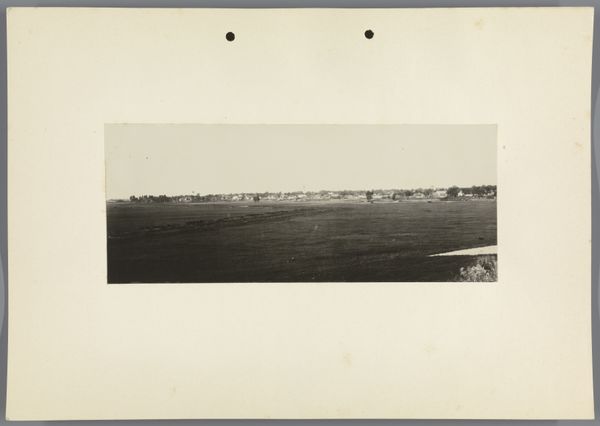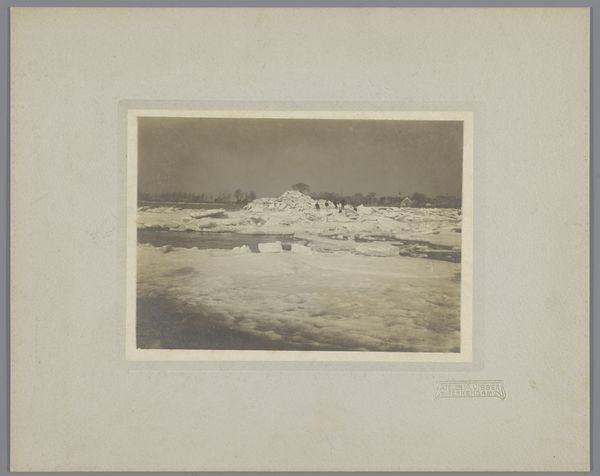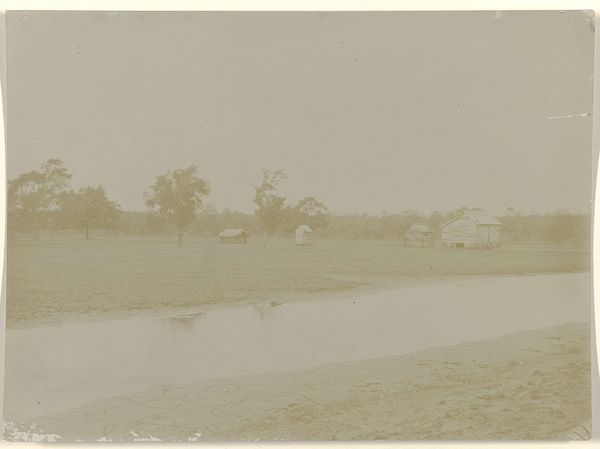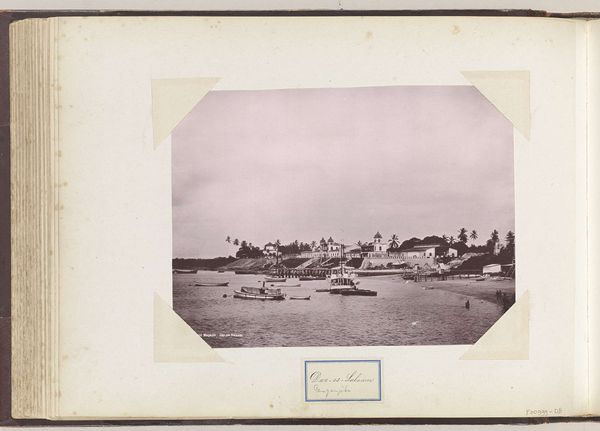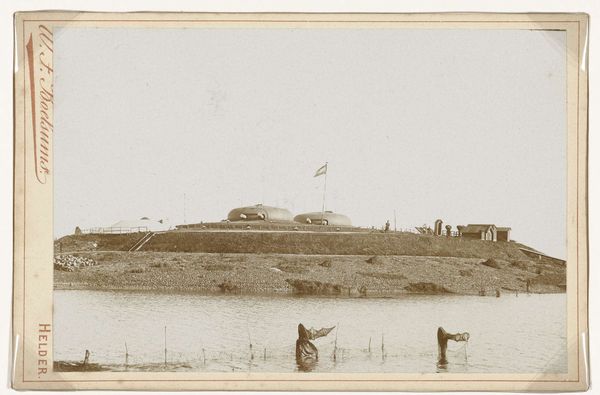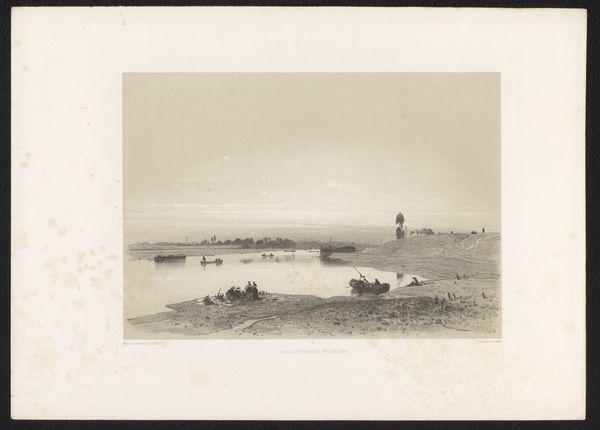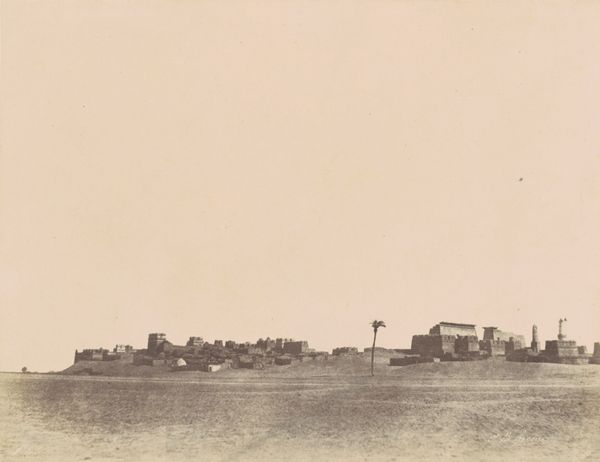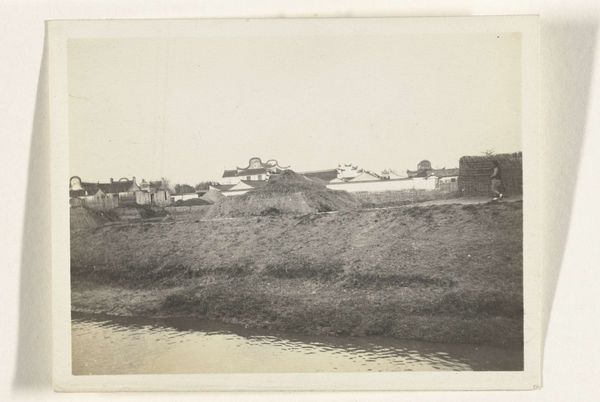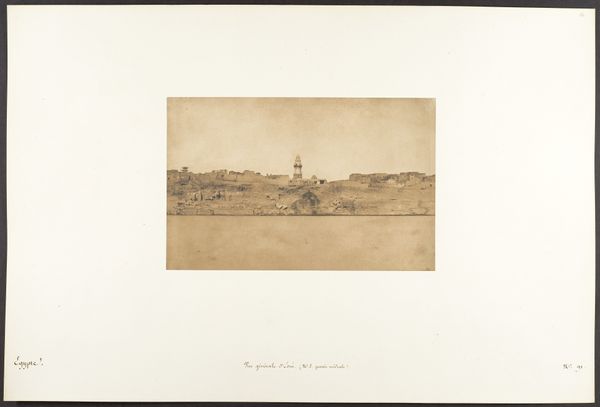
print, photography
# print
#
landscape
#
photography
#
realism
Dimensions: height 48 cm, width 65 cm
Copyright: Rijks Museum: Open Domain
Curator: This photoprint, “Bestek nr. 217, dienst 1903, 1905," whose title loosely translates to something like “Specification No. 217, service 1903, 1905," offers a landscape captured sometime between 1904 and 1926, by the studio of Arnaud Pistoor & Zoon. Editor: My initial impression is bleak—all that sand! It evokes a kind of drained landscape, physically and emotionally. What story is embedded here, I wonder? Curator: It's interesting that you say "drained". The image documents infrastructure works. Consider this: What does it mean to alter a landscape, to drain it of its natural state in service of “progress”? Editor: Right. Infrastructure is never neutral. Here, we're probably seeing land reclamation. But for whom? These projects were often entangled with colonial ambitions, economic expansion. Curator: Precisely. And notice the subtle placement of figures—small, almost anonymous, set against this monumental scene. Are they laborers, engineers, landowners? Their stories are part of this, even if obscured. It hints at the labor inherent to creating and claiming a space. I find their muted presence in contrast to the wide space rather evocative. Editor: Absolutely. Their scale against the landscape shrinks them but also allows them to claim a stake. Also, I’m intrigued by the print's tonal range—those soft grays. It makes the scene feel historical and strangely timeless. Like this battle of progress. Curator: The realism also points to a particular desire to capture the world as it appeared to the photographer at the moment, unidealized. It becomes a powerful document—of labor, ambition, and the transformation of a landscape, but in a time of imperial expansion, these landscape images also provided evidence of colonial projects. The artist presents us with the results without much narrative context and then steps away. Editor: It's haunting, in a way. And a stark reminder that land—even “reclaimed” land—always holds a complex history. There's no easy innocence in viewing such scenes of grand transformations, not even with a serene and “realistic” image like this.
Comments
No comments
Be the first to comment and join the conversation on the ultimate creative platform.
